be quiet! Power Zone 850W CM Power Supply Review
by E. Fylladitakis on August 14, 2014 6:00 AM EST- Posted in
- Cases/Cooling/PSUs
- PSUs
- be quiet!
- FSP
- Fortron/Source
Cold Test Results
For the testing of PSUs, we use high precision electronic loads with a maximum power draw of 2700 Watts, a Rigol DS5042M 40MHz oscilloscope, an Extech 380803 power analyzer, two high precision UNI-T UT-325 digital thermometers, an Extech HD600 SPL meter, a self-designed hotbox, and various other bits and parts. For a thorough explanation of our testing methodology and more details on our equipment, please refer to our How We Test PSUs - 2014 Pipeline post.
The performance of the Power Zone 850W CM at room temperature is surprisingly high. The average conversion efficiency of the power supply within the nominal load range (20% to 100%) is 88.7%, with the maximum being 90.6% efficiency at half load. As a matter of fact, this product should easily meet the 80 Plus Silver efficiency certification. We can only assume that it received an 80 Plus Bronze certification because of an old, now defunct revision, or because the efficiency drops dramatically if the unit is powered from a 110 VAC source; however, both of these scenarios are assumptions on our part. With a load of only 40 Watts, the efficiency of the Power Zone 850W CM drops down to 73.5%, which is a fairly good result considering the class and design of this unit.
The cooling system of the Power Zone 850W CM is a bit unusual, considering the company name. The unit runs cool in general, with below average component temperatures for a power supply of this output, but it relies on the powerful cooling fan. From the moment that the load goes above 12-15% of the unit's capacity, the fan starts increasing its speed in a near-linear fashion. Although this does keep the unit cool, this is rather strange behavior for a unit from a company that takes pride on their low-noise solutions.
The result is that noise from the Power Zone 850W is never what we would really call "quiet". It's clear that this particular model has been designed to be more of a high-performance "gaming" PSU rather than a low-noise product. When you compare it with other PSUs like the EVGA SuperNova 850W G2, the noise and overall performance become even more questionable.


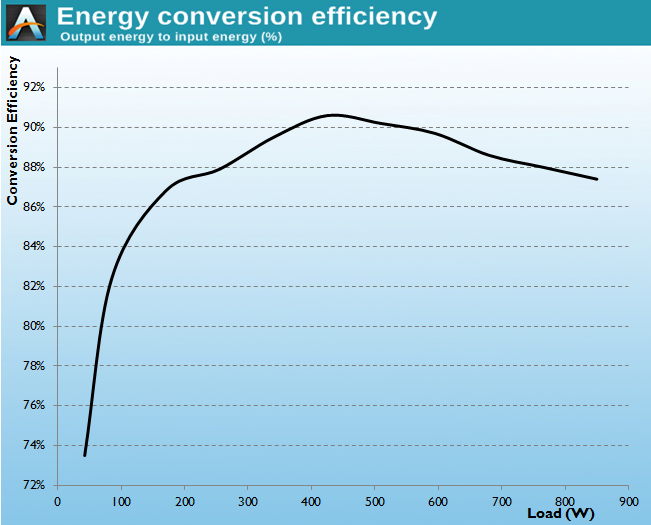
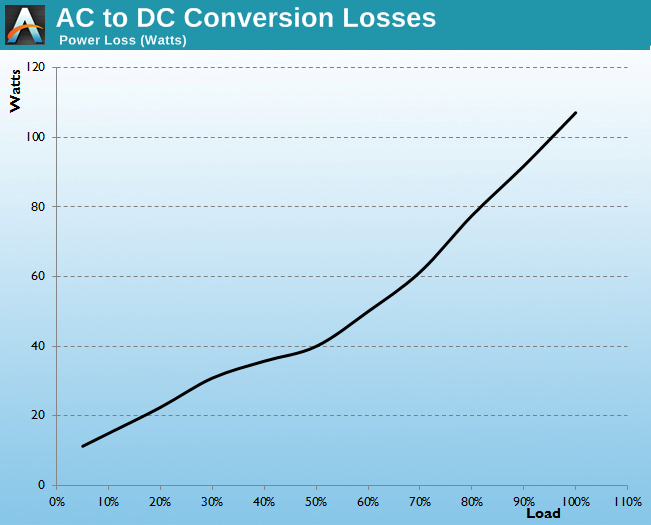
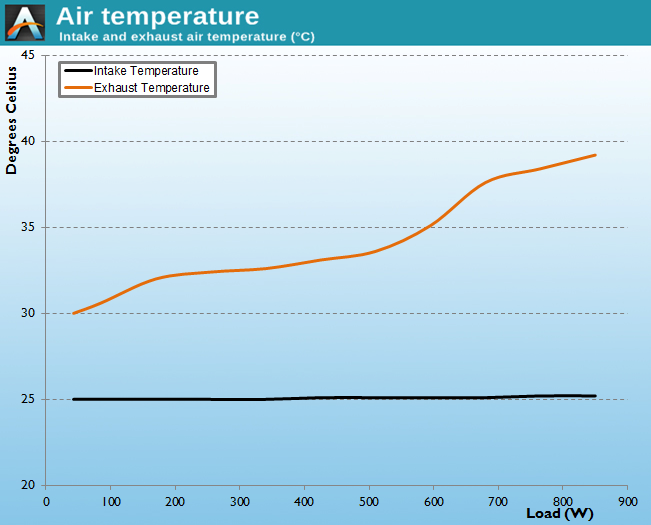
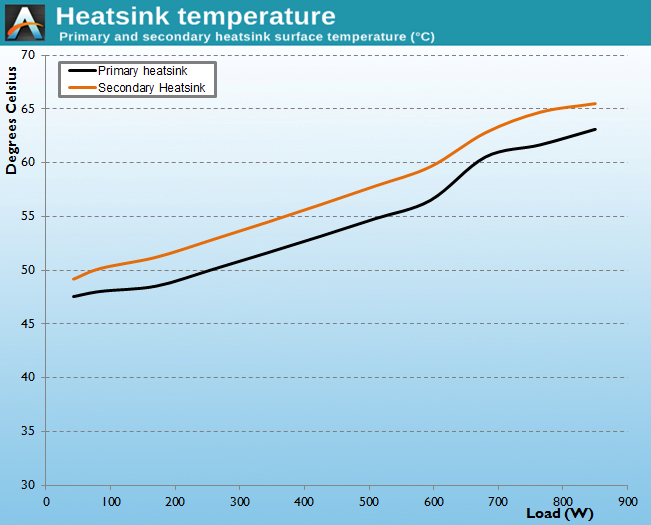
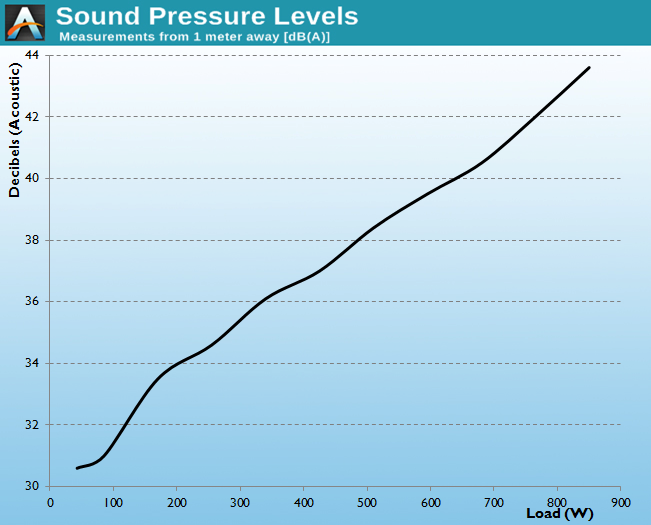








20 Comments
View All Comments
blackmagnum - Thursday, August 14, 2014 - link
Bean-counters ruining geeks' work once more.StrangerGuy - Thursday, August 14, 2014 - link
Compared to a Seasonic OEMs this is pretty rubbish in comparison, let alone the better Superflower OEM designs.Samus - Thursday, August 14, 2014 - link
Seriously...50db?My 8 year old PC Power Cooling 750 Quad uses an ancient design with an 80mm fan and I don't think the fan has ever exceeded 1500RPM (~36db) so anything modern should exceed this, especially for $160. As said, Seasonic, Superflower, and one of my favorite budget PSU OEM's, FSP, are all considerably better options at this price.
Fortron (Sparkle) are pretty good PSU's but I wouldn't spend more than $40 on one as a low-watt office PC replacement.
Tunnah - Thursday, August 14, 2014 - link
My thoughts too. I have a 3-4 year old Silverstone that cost £80 (I guess about $130 back then), 650w and used for SLI, and you barely hear a peep out of itDanNeely - Thursday, August 14, 2014 - link
Have you ever actually had your PSU at >90% load? Comparing your PSU at a load significantly below max to a second one at full load isn't a fair comparison.What does surprise me is that the fan speed curve on this one appears to be linear. The last time I was shopping for PSUs (a few years ago); most of the ones I saw that showed a fan curve kept the fan at it's minimum speed (or completely off?) for the bottom part of the load curve and only started ramping the speed when it got within 250-300W of max power, mostly relying on passive cooling below that point. I've used that observation for sizing PSUs to a target size of MaxLoad+250W so the fan never spins up adding to system noise.
Streetwind - Thursday, August 14, 2014 - link
As a gamer who assembles their own systems, I make a conscious effort to never buy any component that's explicitly marketed "for gamers" - with the sole exception being the graphics card, of course.This review just underlines once again why that practice is a good practice. Here we have a gamer-targeted product that's too highly powered for the average modern gamer PC, offers only mediocre efficiency and performance, errs on the side of unnecessarily hefty cooling and mounts an unreasonable price tag... and the biggest selling point is a different looking outer shell.
My own PSU is from be quiet!, too. But it's not from this gamer-targeted Power Zone series. No, I chose a Straight Power E9 series part with a wattage rating suitable for a single-GPU system. It is practically inaudible even under load, is rated 80PLUS Gold, was tested for excellent voltage regulation and, get this... cost only half the price of the unit tested in this review.
Seriously, people. Stay away from "for gamer" products. Especially if you're a gamer.
romrunning - Thursday, August 14, 2014 - link
There are far too many reviews for these high-powered PSUs when most people are only running a single GPU. Too many neophyte gamers think they need 750W+ when most can easily get by on 400-550W.We really need more reviews showing the practical power needs of a typical gaming system, and then focus on the PSUs to power them. Just because lower-output PSUs are lower in price doesn't mean we should spend an inordinate amount of time reviewing the higher-powered ones with the higher price tags. Sadly, the "quality" that may or may not be in a mfg's higher-powered PSU doesn't always trickle down to their lower-output models, so it would be good to highlight the ones that are or aren't quality choices at the lower to mid-range.
lmcd - Thursday, August 14, 2014 - link
Do I qualify if I also have a i7-3960X? Probably. But if I'm re-encoding and streaming video in the background while I play a visually-intensive game, I'd rather not have my power supply be the bottleneck. 140 W from my video card and 200 W from my CPU don't really add up to 750W.But maybe I want another card? Especially with AMD CPU buyers, that scenario is common: a desire for upgradeability encourages the $30 for a higher-wattage power supply, as opposed to paying $50 for the 500W then another $80 for the 750W.
Sidenote: given how low the power consumption of Intel CPUs has gotten I'm surprised more manufacturers haven't considered supporting 4x 6pin or even 2x 6pin + 2x 8pin configurations on 550W and 60W PSUs. Connector count, in many cases, can drive the new system builder to the higher-wattage power supplies.
DanNeely - Thursday, August 14, 2014 - link
I think they tend to err on the side of caution since they'd take the blame if someone did overload one; and they can't assume people will only use them with cards that barely need a 6+6 or barely need a 6+8 configuration.4x 6 pin at 600W might be OK, since that'd be 2x 225W GPUs + 100W CPU/mobo + 50W drives/fans/etc = 600W total; but 4x6 GPU power connectors on a 550W PSU could go over the limit easily enough. 2x6 and 2x8 would on 600W would be even worse since that's promising enough power to run a pair of 300W GPUs.
inighthawki - Thursday, August 14, 2014 - link
A good 750W PSU is good enough for even a dual SLI 780Ti system. At 550W, even a demanding single GPU system should have more than an adequate supply of power.However in practice, some people buy these larger PSUs for two reasons:
1) Possibility of future expansion. When I bought my PC last summer, I purchased a larger wattage PSU because I was still debating whether or not to get a second PSU. I haven't yet, but if I decide to, I already have enough power.
2) PSUs generally get their best efficiency while running at 50-60% load. So having a 750W PSU to power a 400W system provides the best efficiency. (Granted I realize for many this is a silly point, since the extra cost of the PSU itself generally will outweigh any cost savings, but maybe they like to be green, or just have the money)